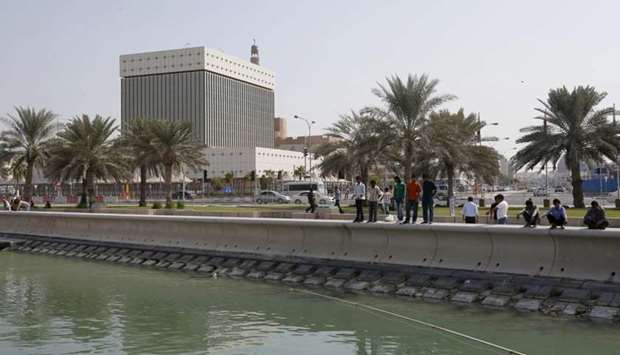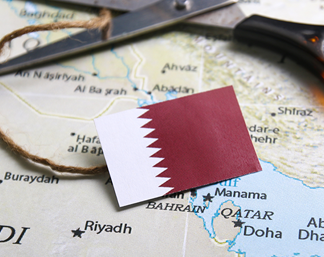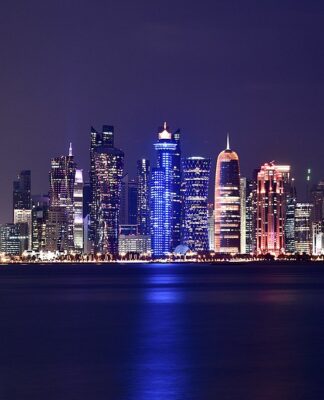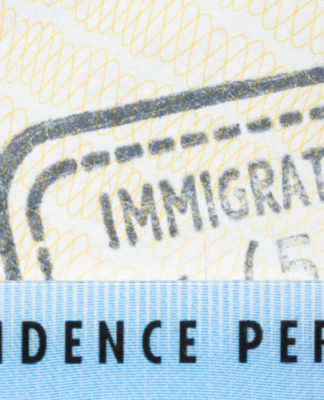
The Qatar Central Bank’s foreign securities portfolio stood at QR81.94bn in February this year against QR44.48bn the previous year period. It was about 56% of the total official reserves during the period.
Faster appreciation of its foreign securities portfolio helped the Qatar Central Bank (QCB) witness a robust growth in the official reserves and thus assets in February 2020, according to the central bank data.
While the foreign securities portfolio surged more than 84% year-on-year, the QCB’s total reserves and assets were up 11% and 3% respectively; indicating the country’s larger say in the global capital markets.
Total reserves grew more than 11% year-on-year to QR200.62bn with official reserves amounting to QR147.05bn and other liquid assets in foreign currency deposits at QR53.57bn at the end of February 29, 2020.
The central bank’s foreign securities portfolio stood at QR81.94bn in February this year against QR44.48bn the previous year period. It was about 56% of the total official reserves during the period.
Between February 2019 and 2020, the foreign securities had peaked to $81.68bn in November 2019 and there were five instances of increase in the portfolio.
Total official reserves registered about 32% year-on-year expansion to QR147.05bn despite about 4% decline in special drawing rights/International Monetary Fund reserve position to QR1.88bn in the review period.
The other liquid assets in foreign currency deposits, which accounted for about 27% of the central bank’s international reserves, had seen more than 22% shrinkage year-on-year.
The QCB’s balance with foreign banks stood at QR55.39bn at the end of February 2020, which witnessed about 6% shrinkage on a yearly basis.
Analysts are of the view that the country’s central bank has comfortable international reserve to ensure stability to the local denomination and the cost of local currency borrowing, although its currency regime is paired with the US Greenback.
The foreign securities and balance with foreign banks together constitute more than 73% of the QCB’s total international reserves. They are about nine times the currency issued in the review period.
Moreover, reserve holdings are one of the key factors in determining the economy’s credit rating, they said, adding this might have had positive influence in Qatar’s present high rating.
The adequacy of the country’s international reserves, in general, and that of the central bank in particular, is the surest guarantee of the stability of the exchange rate of the Qatari riyal against the US dollar, which reflects the strength of the riyal and the robustness of the reserves supporting it, the QCB governor had said earlier when Qatar came under the siege.
The central bank’s gold reserves had fallen by one-fourth year-on-year to QR7.83bn at the end of February 2020.
The banking regulator’s total assets registered about 3% increase year-on-year to QR234.18bn, even as its balance with the local banks had seen more than 16% shrinkage to QR64.13bn and other assets by about 43% to QR22.66bn.
Total reserves grew more than 11% year-on-year to QR200.62bn with official reserves amounting to QR147.05bn and other liquid assets in foreign currency deposits at QR53.57bn at the end of February 29, 2020.
The central bank’s foreign securities portfolio stood at QR81.94bn in February this year against QR44.48bn the previous year period. It was about 56% of the total official reserves during the period.
Between February 2019 and 2020, the foreign securities had peaked to $81.68bn in November 2019 and there were five instances of increase in the portfolio.
Total official reserves registered about 32% year-on-year expansion to QR147.05bn despite about 4% decline in special drawing rights/International Monetary Fund reserve position to QR1.88bn in the review period.
The other liquid assets in foreign currency deposits, which accounted for about 27% of the central bank’s international reserves, had seen more than 22% shrinkage year-on-year.
The QCB’s balance with foreign banks stood at QR55.39bn at the end of February 2020, which witnessed about 6% shrinkage on a yearly basis.
Analysts are of the view that the country’s central bank has comfortable international reserve to ensure stability to the local denomination and the cost of local currency borrowing, although its currency regime is paired with the US Greenback.
The foreign securities and balance with foreign banks together constitute more than 73% of the QCB’s total international reserves. They are about nine times the currency issued in the review period.
Moreover, reserve holdings are one of the key factors in determining the economy’s credit rating, they said, adding this might have had positive influence in Qatar’s present high rating.
The adequacy of the country’s international reserves, in general, and that of the central bank in particular, is the surest guarantee of the stability of the exchange rate of the Qatari riyal against the US dollar, which reflects the strength of the riyal and the robustness of the reserves supporting it, the QCB governor had said earlier when Qatar came under the siege.
The central bank’s gold reserves had fallen by one-fourth year-on-year to QR7.83bn at the end of February 2020.
The banking regulator’s total assets registered about 3% increase year-on-year to QR234.18bn, even as its balance with the local banks had seen more than 16% shrinkage to QR64.13bn and other assets by about 43% to QR22.66bn.


























